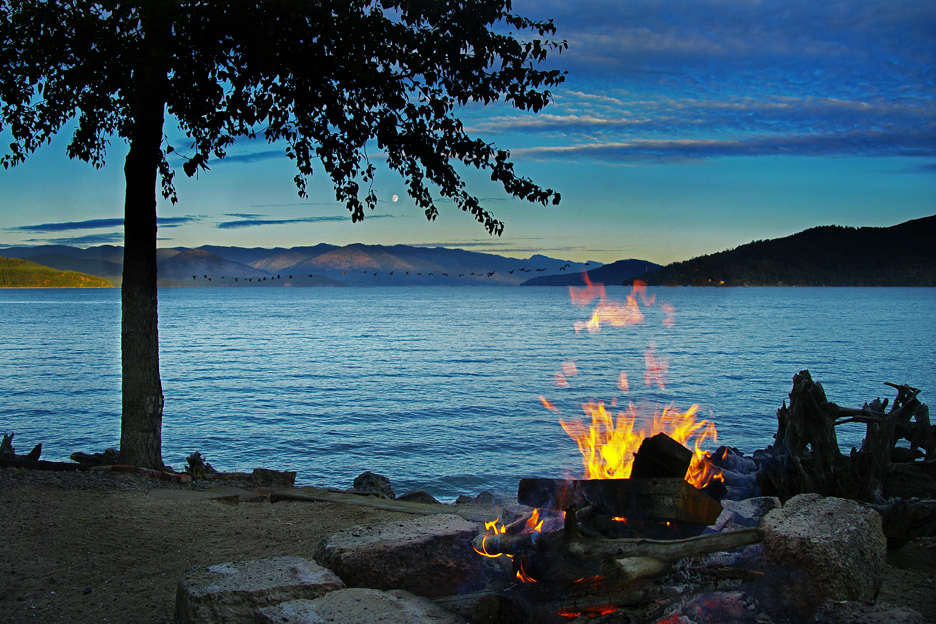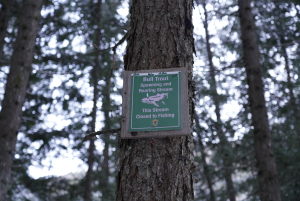Lake Pend Oreille
Protecting an Idaho Icon
At 43 miles long with 111 miles of shoreline and more than 1,000 feet deep, Lake Pend Oreille is the largest lake in Idaho. It’s a precious resource for all Idahoans and visitors, especially those who live, work, and recreate in the North Idaho Panhandle. Lake Pend Oreille provides unparalleled recreational opportunities – from spending a day at the beach, hiking, walking, swimming, taking to the water by boat or kayak, wildlife watching, fishing, and more. It’s no wonder that the lake attracts visitors from all over the country. The lake also provides abundant wildlife habitat – ospreys and bald eagles rule the sky; moose, deer, bears, cougars, and more roam the surrounding land; and kokanee salmon, bull trout, and many other fish species can be found in its depths.
Lake Pend Oreille is also home to dozens of wetlands, which play a crucial role in protecting and improving water quality and are critically important for biodiversity. Wetlands support people and wildlife alike – helping control erosion, retaining soil and nutrients, providing water availability during drought, and mitigating climate impacts. North Idaho in particular is famous for its wetlands – 59 wetlands are found in the panhandle area, 13 of which are identified by Idaho’s Department of Fish and Game as Class I, deserving highest conservation priority. But as more and more people move to the state, drawn in part by its natural beauty, wetlands are feeling the impact – developers are turning toward building in wetlands, wreaking havoc on our ecosystems.

Protecting Wetlands and Trestle Creek
Nestled behind an inlet on the banks of Lake Pend Oreille is one of these special places – Trestle Creek. Along 10 miles of creek and dozens of tributaries, Trestle Creek is a serene, hidden refuge for wildlife and a thriving aquatic ecosystem. The waters of Trestle Creek provide important habitat for Westslope cutthroat-trout and other aquatic species, offer diverse recreational opportunities, and it’s one of the few places where families can easily observe spawning bull trout and kokanee. The area also provides some of the best bull trout habitat in the Lake Pend Oreille watershed, historically representing nearly 50% of spawning sites. Bull trout are classified as “threatened” under the Endangered Species Act, making it vital that we do everything we can to restore degraded bull trout habitat and protect habitat that is still in good condition.

Current Threats to Trestle Creek
Development is listed as one of the top threats to bull trout habitat in Trestle Creek, which remains the most important spawning habitat for bull trout in the entire Pend Oreille Basin. Since bull trout are listed as “threatened” under the Endangered Species Act, it is vital that we do everything we can to restore degraded bull trout habitat and protect habitat that is still in good condition.
The Idaho Club has recently submitted a harmful proposal that aims to build five single-family estates and a private marina with 105 fixed-pier docks. The project would reroute Trestle Creek’s north branch, excavate an island and peninsula, and discharge thousands of tons of soil and rock and other debris into Lake Pend Oreille near the mouth of Trestle Creek. This proposed development would destroy important shoreline vegetation, beaver dams, nesting trees for bald eagles and osprey, and recreational areas.
The Idaho Club has long sought to develop Trestle Creek for its private residents. In October 2022, the Army Corps of Engineers suspended a permit it had issued that would have allowed the Club to move forward with a similar development. This permit was canceled in response to litigation filed by the Idaho Conservation League and the Center for Biological Diversity.
The first step in the Club’s most recent proposal was to obtain a lakebed encroachment permit from the Idaho Department of Lands, the agency responsible for permitting docks and marinas. This permit was approved on October 27, 2023. The next step will be to obtain a permit from the U.S. Army Corps of Engineers to dredge the lakebed and fill the wetlands on the five residential lots. This additional permitting process will bring more opportunities for the public to weigh in. We encourage the public to stay engaged in this important issue.
